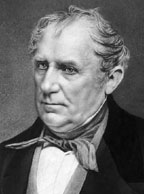Just like old times
 Originally published in 1845, Twenty Years After is the lesser-known sequel to Alexander Dumas’s classic novel The Three Musketeers. Dumas brings back his legendary heroes Athos, Porthos, Aramis, and d’Artagnan, as well as many of the supporting characters from the first book, for an adventure that contains all the action, humor, and suspense of the original installment. If you haven’t read the first book, you will be lost in this one, and even if you have, you might find yourself lost anyway. Twenty Years After relies more heavily on historical events than its predecessor. Dumas ingeniously weaves his fictional characters into the fabric of history, making them integral players behind the scenes of monumental events, without ever altering what’s written in the history books. The story is set in the mid-seventeenth century, a complicated period in France, but Dumas provides enough historical context to keep the reader oriented amid the political turmoil.
Originally published in 1845, Twenty Years After is the lesser-known sequel to Alexander Dumas’s classic novel The Three Musketeers. Dumas brings back his legendary heroes Athos, Porthos, Aramis, and d’Artagnan, as well as many of the supporting characters from the first book, for an adventure that contains all the action, humor, and suspense of the original installment. If you haven’t read the first book, you will be lost in this one, and even if you have, you might find yourself lost anyway. Twenty Years After relies more heavily on historical events than its predecessor. Dumas ingeniously weaves his fictional characters into the fabric of history, making them integral players behind the scenes of monumental events, without ever altering what’s written in the history books. The story is set in the mid-seventeenth century, a complicated period in France, but Dumas provides enough historical context to keep the reader oriented amid the political turmoil.As the title indicates, it has been twenty years since the adventures of the first book. The four Musketeers have become estranged over time, and have not spoken in several years. D’Artagnan has spent the last two decades languishing in his post as lieutenant of the Musketeers, with no opportunity for advancement, insufficient pay, and no gratitude whatsoever from the queen for his heroic exploits of the past. Cardinal Richelieu has died. The new prime minister is Cardinal Mazarin, a less formidable but equally devious ruler, who is rumored to be the lover of Queen Anne of Austria. The two rule France on behalf of King Louis XIV, a ten-year-old boy. When Mazarin commissions d’Artagnan to perform a dangerous mission, he must track down his three friends for assistance. The reunion, however, is not entirely amicable. An insurrection arises in France, known as the Fronde. Led by certain members of Parliament, the citizens of Paris rebel against the monarchy in protestation of exorbitant taxation by Mazarin. This threat to the king and queen inspires various princes and dukes to jockey for position in a mad scramble for power. Meanwhile in England, the Puritan rebel Oliver Cromwell hunts down the English monarch King Charles I. Amidst all this intrigue and strife, our four heroes find themselves on opposite sides of two civil wars. As if that were not enough, a mysterious enemy from their past is pursuing them, hell-bent on revenge.
Twenty Years After is every bit as good as The Three Musketeers, if not better. It contains all the excitement and delight of the previous novel, but Dumas develops the characters further and provides a more artfully constructed plot. It’s only flaw is that the narrative requires too much time spent away from the Musketeers in order to keep track of all the historical figures. While the first book was loaded with duels, sword fights, drinking, and gambling, the second is more about political maneuvering and cunningly plotted strategies. What The Musketeers really need is a book that combines the best of both worlds. For that I hold out hope for the third book in the trilogy, The Vicomte de Bragelonne, which is named after the young ward that Athos has taken under his wing, who plays a minor role in this book. After reading Twenty Years After, I can’t wait to tackle the third installment, though this wonderful series of adventure novels is so enjoyable I will be sorry to see it come to an end.
If you liked this review, please follow the link below to Amazon.com and give me a “helpful” vote. Thank you.
http://www.amazon.com/review/R2R5N5M1HZ2QSQ/ref=cm_cr_rdp_perm























